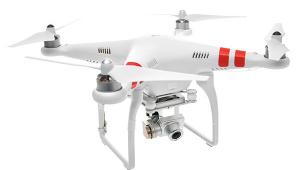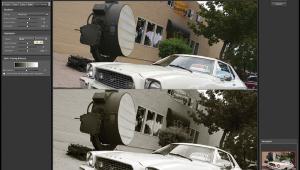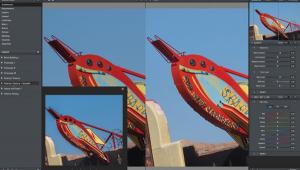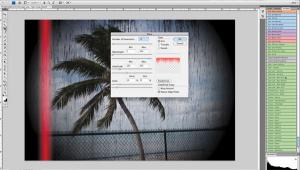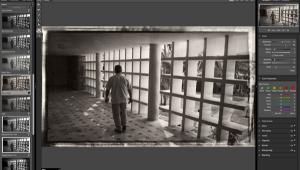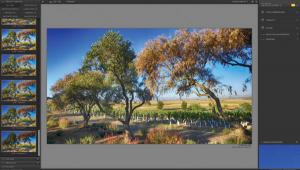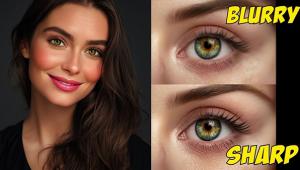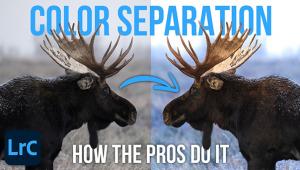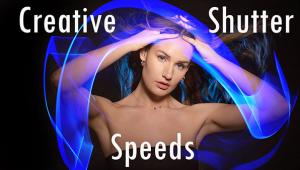Time To Make Some Photographs: Promise To Make New Images This Week
When I was studying photography at the Maryland Institute College of Art, one of my instructors commented that some of the best photographs were made in the break room. Not real photographs, mind you, but chitchat among my erstwhile colleagues about the great photographs they were going to make—someday. While some of those images may have eventually gotten made, I’ll bet only a few of my fellow students actually produced the photographs they talked about so excitedly. And that’s because it’s easy to get wrapped up in what you have been successfully doing for so long that you forget to explore what attracted you to photography in the first place. You can be so mesmerized by the pixels on your monitor that you forget to create new photographs, something that’s different from the last batch of images captured. That’s why I think it’s a good idea to not only take time to smell the roses but to photograph them as well.
Seeing Stars
One of my favorite on-lens glass special effects filters was the classic cross star filter and Star Effects 1.1 by Topaz Labs (www.topazlabs.com) lets you accomplish some of the same kinds of effects—and more—in the digital darkroom. The latest version is a free update to Star Effects ($29.99) and includes two improvements that make sure your star effects are positioned exactly where you want. Topaz Labs has also improved the plug-in’s auto-detection technology to center those effects within the light sources in your photograph.
Star Effects also has a bunch of presets that permit a quick and creative one-click workflow, letting you choose from options such as traditional, starburst, cross star, and Hollywood star. A Mode selection feature allows for star effect extraction from your base image and you can stack a variety of star effects via the plug-in’s Apply button. Star Effects is customizable and has controls for color, temperature, secondary spikes, glow, and ring flare. Best of all, there’s no contrast loss as happens with traditional glass cross star filters. Download a 30-day free trial of Star Effects and try it with your own photographs.
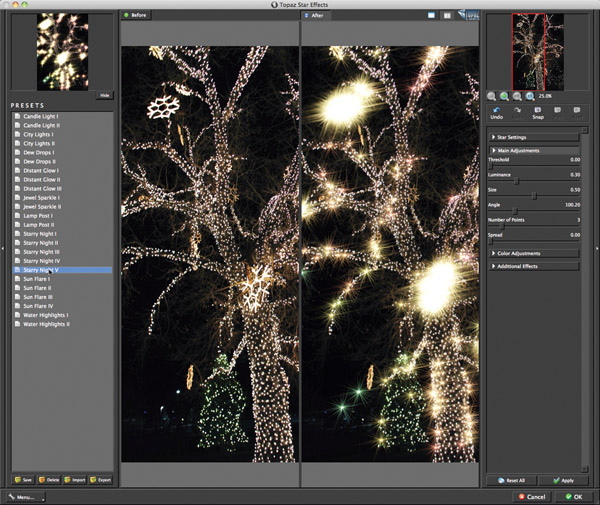
Plug-In Of The Month
Film Stocks by Digital Film Tools (www.digitalfilmtools.com) is a plug-in that simulates 288 (I didn’t count ’em) different color and black-and-white still photographic films, motion picture film stocks, and historical photographic processes. You can select from Agfa, Fuji, Ilford, Kodak, Polaroid, and Rollei in color or black and white. The plug-in includes presets that give you the ability to cook up the skewed color of cross processing, Lo-Fi photographic looks from Lomo and Holga cameras, along with faded film looks. Film Stocks includes controls for color correction, curves, color filters, sharpness, diffusion, vignetting, and film grain.
You can apply any of the presets and then customize the default settings, or create your own interesting looks, saving them for future use or to share with friends and colleagues. Film Stocks offers 8/16-bit image processing and multi-processor acceleration, plus works with Adobe’s Photoshop CS3, Photoshop Elements 6, Lightroom 3, and Apple’s Aperture 3 and later versions of all those programs, as well as many video-editing programs. When installed on the same machine, one Film Stocks license ($95) allows it to run in Photoshop, Photoshop Elements, Lightroom, and Aperture.
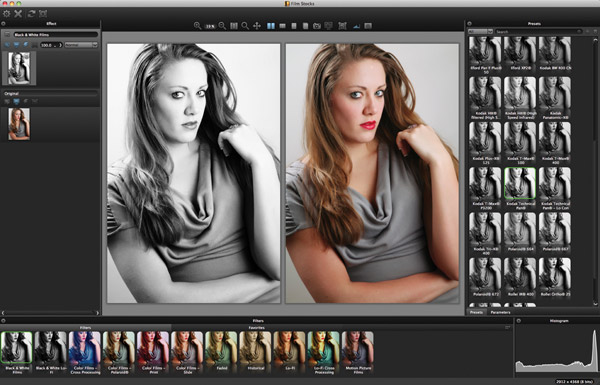
Getting WYSIWYG
If you’re not happy with the color of your inkjet prints, the solution starts with having a color correct monitor that displays accurate color as well as shadows and highlights. I always liked Datacolor’s (www.datacolor.com) Spyders because they were inexpensive, easy to use, and just plain worked. I’ve been using a Spyder2Pro since 2004 and just switched to the new Spyder4Pro because it makes quick work of calibration. The whole process takes less than 15 minutes, including software installation.
Spyder4’s software has an easy-to-use interface with lots of levels for brightness and color control. The hardware is a seven-channel sensor that captures color the same way as the human eye, making sure that colors on your screen look realistic. At the end of the procedure, the software lets you snap between the way your monitor looked before and after it’s calibrated. You’ll be surprised. Datacolor offers several Spyder4 models to fit your budget and requirements, including the Spyder4Express ($119), Spyder4Pro ($169), and Spyder4Elite ($249). Check their website for the differences and to see which model best suits your workflow. If you care about the way your on-screen images and prints look, you have to calibrate. The Spyder4 is the best way I’ve found so far.
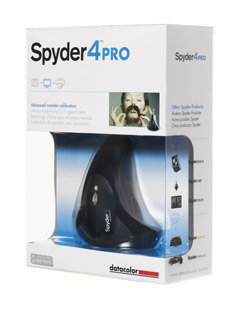
Belt-Mounted System
Think Tank Photo (www.thinktankphoto.com) redesigned its Modular Rotation System Skin Components for better fit and gear access. Their Modular Skin Set V2.0 includes the Skin 50 V2.0, Skin 75 Pop Down V2.0, Skin Strobe V2.0, and the Skin Body Bag, all of which fit inside a breathable travel pouch. These cases can be carried as a set or as individual items on one of Think Tank Photo’s Skin Belts. I’ve been using the Pro Speedbelt V2.0 because it better fits my newly svelte waist. For shooters preferring “belt and suspenders” security there’s a Keep It Up Shoulder Strap that includes a memory card holder and vertical support without producing the kind of militaristic look that similar systems I’ve tried exhibit.
Skin components use a Rotate and Lock design feature that lets components slide along the belt and fasten in a specific position with a “sound silencer” to minimize hook-and-loop noise. The pouches have a wide mouth for smoother lens retrieval and a one-hand drawstring closure with an auto-locking mechanism. The pouches have a zippered bottom pocket with a seam-sealed rain cover and are constructed from rip-stop nylon for durability and a smooth back that should reduce wear on your clothing, all while letting components slide easily on the belt.
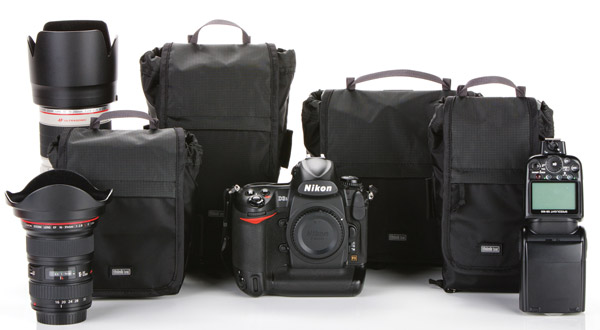
App Of The Month
Hipstamatic (http://heysynthetic.com) is an iPhone app designed to produce the quirks of shooting old-school film but gives you the ability to digitally swap lenses, film, and flash settings all with the swipe of a finger. HipstaPrints have that seemingly accidental snapshot feel so beloved by hipsters while recalling the days of shooting film. For $1.99 from Apple’s App Store, you can download the base Hipstamatic app that includes a set of standard lenses, films, and flashes to get started. Additional gear is available for the app as HipstaPaks and start at 99 cents.
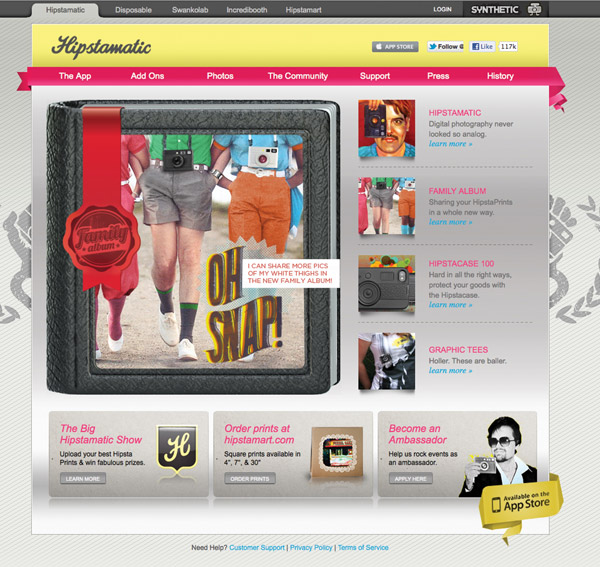
Captured images can be uploaded directly to Facebook, Twitter, Tumblr, Flickr, or e-mailed to friends and you can order real analog prints delivered to your door, directly from the app. The company even offers an iPhone case ($39.95) to help immerse yourself in the total Hipstamatic experience. If you have a favorite app you would like to share with Shutterbug readers, drop me an e-mail via the Contact page on my website, www.joefarace.com.
- Log in or register to post comments
